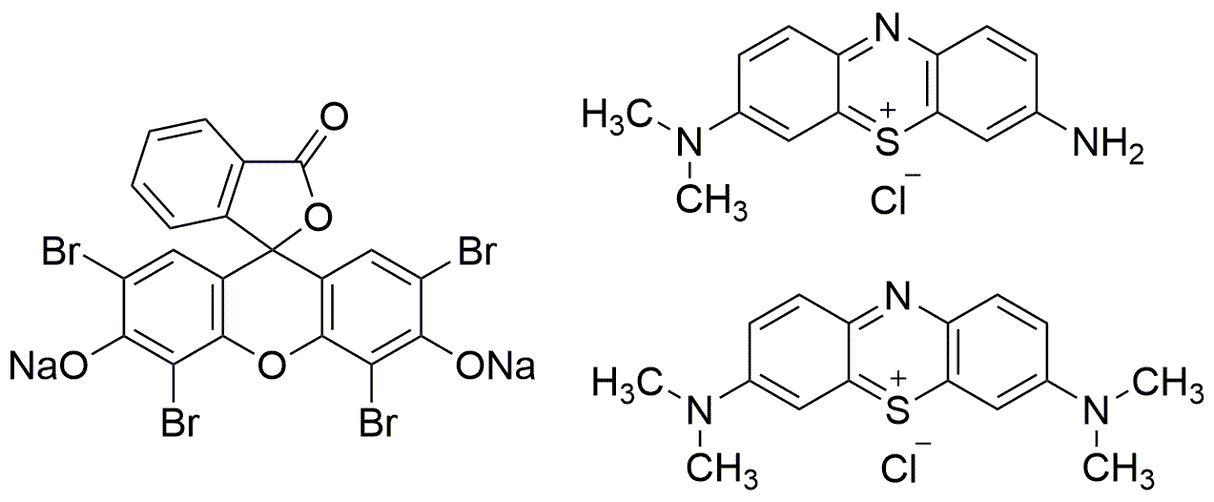Tetrachrome Stain (MacNeal) is widely utilized in research focused on:
- Histology and Pathology: This stain is essential for visualizing cellular structures in tissue samples, enhancing contrast in microscopy, and aiding in the diagnosis of diseases such as cancer.
- Microbiology: It is used to differentiate bacterial species in clinical samples, allowing for more accurate identification and treatment options.
- Pharmaceutical Development: Researchers employ this stain to assess the efficacy of drug formulations by observing cellular responses to various compounds.
- Environmental Science: The stain helps in studying the effects of pollutants on cellular structures in aquatic organisms, contributing to ecological assessments.
- Forensic Science: It is applied in forensic investigations to highlight biological samples, aiding in the identification of substances in crime scene analysis.
Información general
Propiedades
Seguridad y normativas
Aplicaciones
Tetrachrome Stain (MacNeal) is widely utilized in research focused on:
- Histology and Pathology: This stain is essential for visualizing cellular structures in tissue samples, enhancing contrast in microscopy, and aiding in the diagnosis of diseases such as cancer.
- Microbiology: It is used to differentiate bacterial species in clinical samples, allowing for more accurate identification and treatment options.
- Pharmaceutical Development: Researchers employ this stain to assess the efficacy of drug formulations by observing cellular responses to various compounds.
- Environmental Science: The stain helps in studying the effects of pollutants on cellular structures in aquatic organisms, contributing to ecological assessments.
- Forensic Science: It is applied in forensic investigations to highlight biological samples, aiding in the identification of substances in crime scene analysis.
Documentos
Hojas de datos de seguridad (HDS)
La SDS proporciona información de seguridad completa sobre la manipulación, el almacenamiento y la eliminación del producto.
Especificación del producto (PS)
La PS proporciona un desglose completo de las propiedades del producto, incluida la composición química, el estado físico, la pureza y los requisitos de almacenamiento. También detalla los rangos de calidad aceptables y las aplicaciones previstas del producto.
Certificados de análisis (COA)
Busque certificados de análisis (COA) ingresando el número de lote del producto. Los números de lote y de partida se pueden encontrar en la etiqueta de un producto después de las palabras "Lote" o "Lote".
Número de catálogo
Número de lote/lote
Certificados de origen (COO)
Este certificado de origen confirma el país en el que se fabricó el producto y también detalla los materiales y componentes utilizados en él y si se deriva de fuentes naturales, sintéticas u otras fuentes específicas. Este certificado puede ser necesario para cumplir con las normativas aduaneras, comerciales y regulatorias.
Número de catálogo
Número de lote/lote
Hojas de datos de seguridad (HDS)
La SDS proporciona información de seguridad completa sobre la manipulación, el almacenamiento y la eliminación del producto.
DownloadEspecificación del producto (PS)
La PS proporciona un desglose completo de las propiedades del producto, incluida la composición química, el estado físico, la pureza y los requisitos de almacenamiento. También detalla los rangos de calidad aceptables y las aplicaciones previstas del producto.
DownloadCertificados de análisis (COA)
Busque certificados de análisis (COA) ingresando el número de lote del producto. Los números de lote y de partida se pueden encontrar en la etiqueta de un producto después de las palabras "Lote" o "Lote".
Número de catálogo
Número de lote/lote
Certificados de origen (COO)
Este certificado de origen confirma el país en el que se fabricó el producto y también detalla los materiales y componentes utilizados en él y si se deriva de fuentes naturales, sintéticas u otras fuentes específicas. Este certificado puede ser necesario para cumplir con las normativas aduaneras, comerciales y regulatorias.

